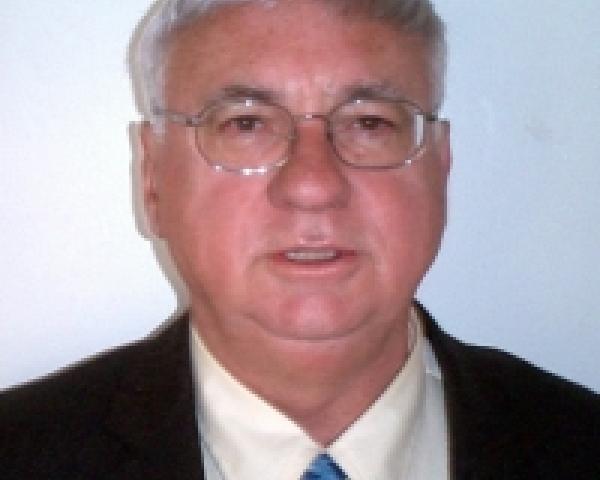Unnecessary surgery: When is it going to end? Not any time soon, unless a documented and proven approach is used by health benefit plan sponsors.
I began my healthcare career 35 years ago when, as a graduate student at Columbia University School of Public Health, I was awarded a full scholarship as a public health intern at Cornell Medical College in New York City. Dr. Eugene McCarthy at Cornell was the medical director of a Taft-Hartley joint union/management health benefits self-administered fund at the time and my mentor. I worked on the Building Service 32 B-J Health Fund, which was the focus of an eight-year study sponsored by the then-Department of Health, Education and Welfare (now Health and Human Services, or HHS) and which was the first study on second surgical opinions.
The study (1972-1980) followed union members and their families who were told they needed elective surgery and documented that roughly 30% of recommended surgeries turned out to be medically unnecessary. The study found 12 surgeries that generated the most second opinions that didn't confirm the original diagnosis. This list comprises: back surgery, bone surgery and bunions of the foot, cataract removal, cholecystectomy, coronary bypass, hysterectomy, knee surgery, mastectomy, prostatectomy, hip surgery, repair of deviated septum and tonsillectomy.
What has changed on this list 35 years later? Very little, if anything.
USA Today on March 12, 2013, reported on a study that found that; "tens of thousands of times each year patients undergo surgery they don't need." After the release of this study, a former surgeon and professor at the Harvard School of Public Health stated that: "It is a very serious issue, and there really hasn't been much movement to address it."
A CNN special on March 10, 2013, reported that the U.S. spent $2.7 trillion on healthcare per year and that 30%, or roughly $800 billion, was wasted on care that did not improve outcomes. Sound familiar? The Cornell study said the same thing 31 years earlier.
Public and private employers, health, disability and workers' comp insurers and state and federal programs such as Medicare and Medicaid are doing very little, if anything, to effectively address this problem. The solution to preventing unnecessary care and surgery is not in raising co-pays and deductibles and other out of pocket costs unless they are tied to consumer education and well-designed second-opinion programs.
In response to the USA Today article, a leading medical expert said, "You can shop for a toaster better than prostate surgery, because we don't give patients enough information." Another leading surgeon stated; "Far too many patients are having surgeries they don't need, with associated major and severe complications such as long-term disability and even death." Furthermore, "I see patients with neck and back problems, and at least 1/3 are scheduled for operations they don't need, with no clinical findings except pain."
What is the principal focus of today's multibillion-dollar managed care industry, especially in workers' compensation? Provider discounts, that's what. But how is it a savings if the patient receives a discount on an operation he doesn't need?
Most often, when I ask that question I am met with blank stares.
The New England Journal of Medicine in 2009 stated that a common knee surgery for osteoarthritis "isn't effective in treating patients with moderate to severe forms of the disease." Yet, according to federal researchers, 985,000 Americans have arthroscopic knee surgery each year, and 33% (more than 300,000) are for osteoarthritis "despite overwhelming medical evidence that arthroscopic surgery is not effective therapy for advanced osteoarthritis of the knee."
According to the chairman of cardiovascular medicine at the world-renowned Cleveland Clinic, the U.S. health system is "doing a lot of heart procedures that people don't need." For example, angioplasty stent surgery in heart patients will likely relieve pain but "will not help a person live longer and will not protect against having another heart attack... What's worse is that many of these surgeries will lead to bad outcomes." He said, "This procedure should be performed for patients having a heart attack, but 95% of patients who have angioplasty surgery are not the result of a heart attack."
The estimate on the direct medical costs to American businesses for low back pain is $90 billion a year; this doesn't include workers' compensation indemnity and litigation costs, disability costs, sick days and indirect costs such as lost productivity. As reported in my previous article, The Truth about Treating Low Back Pain, the Journal of the American Medical Association (JAMA) estimated that 40% of initial back surgeries, which amounts to more than 80,000 patients per year, have "failed back surgeries." These unsuccessful back surgeries most often lead to a lifetime of debilitating back pain and billions more in long-term disability and Social Security Disability Insurance (SSDI) costs. These patients -- four out of every 10 -- all wish they had received a second opinion now. Yet when I recommended a second-opinion program to a union health fund in New Jersey, the manager said: "I am not going to tell my union members they need to get a second opinion." True story.
Although we were scheduled to have an informal lunch meeting, after I recommended the fund consider a second-opinion program the "lunch" part of the meeting disappeared, even though I had driven two hours to get there. Maybe that is where the expression there is "no such thing as a free lunch" comes from? The health fund manager was downright indignant about my suggestion even though the first-second opinion program was conducted on behalf of a union health fund and was overwhelmingly successful.
He did describe, however, how upset he was about the fund's rising healthcare costs. I guess he just wanted to be able to complain about it instead of actually doing something about it on behalf of his members. (The president of the union confided in me afterward that he had failed back surgery many years ago and wished he had gone for a second opinion.)
A colleague of my mine who is a senior vice president of product development for a leading third-party administrator (TPA) confided that insurance companies and TPAs will not implement programs that I could design and implement for their clients because they would never admit it was a good idea, given that they didn't invent it.
I also hear all the time from so-called experts that second surgical opinions don't work and don't save money.
But large self-insured employers and health, disability and workers' comp insurers should follow the lead of the top sports teams who send their top athletes for second opinions all the time to places like the Hospital for Special Surgery (HHS) and New York-Presbyterian Hospital/Columbia Medical Center in Manhattan or UCLA Medical Center in Los Angeles.
When I send client employees or friends and neighbors for second opinions, they often tell me that their appointment was with the same doctor Tiger Woods or Derek Jeter went to. My response is, "exactly." Very often, conservative treatment is recommended and produces great patient outcomes, especially for back injuries and diagnoses for conditions like carpal tunnel syndrome. (See Carpal Tunnel Syndrome: It's Time to Explode the Myth.)
Most, if not all, top surgeons I have met welcome second opinions for their patients because, when surgery is recommended, they want their patients to be assured that another expert also believes it is in their best interests.
I interned at the first second-surgical opinion in the country. I wrote my master's thesis at Columbia on what I learned and how to improve upon the design and administration of the very successful Cornell program. Although the phrase, "I want a second opinion," is now common terminology in America from auto repair to surgery, it has not reduced the overall amount of unnecessary surgery. If your program is not successful or not saving money it is because there is a serious flaw in the design and administration.
What I have documented since I designed or administered the first corporate second-opinion benefit programs back in the early 1980s are several key components of a successful program. First, it must be mandatory for the plan member to receive a second opinion for selected elective surgeries. Remember, elective surgery, by definition, means scheduled in advance, not for life-threatening conditions. Second, the second-opinion physician must not be associated with the physician recommending surgery. The physician must truly be an independent board-certified expert. Third, the second-opinion physician cannot perform the surgery; this provision removes any conflict of interest.
In addition, although a plan member should be required to receive a second opinion to receive full benefits under the health plan, the decision on whether to have surgery is entirely up to the patient. The whole idea is to educate the patient on the pros and cons of proposed surgery and the potential benefits for non-surgical treatment or different type of surgery (lumpectomy vs total mastectomy, for example). (I also developed a process of administrative deferrals for instances when it would be impractical to obtain a second opinion or when the conditions were so overwhelming that the need for a second opinion could be waived.)
It is only by helping to make patients truly informed consumers of healthcare and educating them on the benefits of alternative surgical treatments that a program can be successful. Voluntary programs simply don't work. Rarely do patients seek second opinions on their own, and most often do not know where to obtain and arrange for a top-notch second opinion. In addition, they often feel uncomfortable and do not want to tell their physician they are seeking a second opinion. That is why I found that a program only really works when patients can state that their "health plan requires that I get a second opinion." The mandatory approach reduces unnecessary surgery dramatically and saves the plan sponsor money with at least 10:1 return on investment.
The most amazing reduction of unnecessary surgery and resulting savings to the plan sponsor comes simply by implementing and communicating the benefits and requirements of the program design that I outlined above. The reason is known as the "Sentinel Effect." What the original Cornell study and others have documented is at least a 10% reduction in the amount of recommended elective surgery simply from announcing the program is now in effect. No need for an actual second opinion; merely require one!
Now that is cost-effective!








